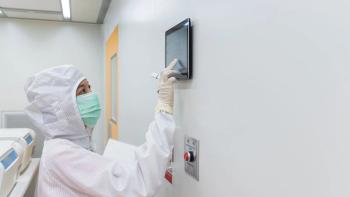
- BioPharm International-05-01-2020
- Volume 33
- Issue 5
Straight Talk on Closed Aseptic Systems
The industry’s aversion to risk has led to its treating closed aseptic processing systems as miniature cleanrooms, resulting in redundant and expensive practices. This article ponders this impasse, examining new technologies and applications in light of past regulatory guidance and more than 40 years of operating evidence.
Commercial production of sterile pharmaceutical products has changed dramatically since the early 1900s (1), when most injectable products were filled manually, without the accoutrements that are now considered essential to protecting sterile products from contamination. Over time, the industry recognized that physically separating operators from the product led to improved patient safety. As a result, some installations began to use gloveboxes that were designed to protect sterile materials from operator-borne contaminants.
As the pharmaceutical industry grew, so did the size of its production equipment. Large sterilized stainless-steel and glass vessels were used to hold sterile liquids prior to filling. These gloveboxes and tanks were the industry’s first closed systems, and their adoption provided a better environment for processing sterile materials. Sterile liquid-handling systems grew substantially in size to fulfill the demand for sterile antibiotics during and immediately after World War II. Vessels of 5000 L and larger were used in the manufacture of antibiotics, large-volume parenterals, contrast media, and other high-volume products, and comparably sized liquid systems remain in use today.
Closed systems of varying complexity were also used in the aseptic manufacture of liposome formulations, suspensions, creams, and ointments. Because these systems can be reliably sterilized and maintained in a closed state, regulators did not formally require internal environmental monitoring of closed systems or of their background environments (2).
Nevertheless, a gap has developed between existing industry practices and the science behind closed systems, which are still restricted by use of design and control concepts that were developed for open systems (
Defining closed systems
Until the 1970s, sterility testing and environmental monitoring provided the formal demonstration of performance capability for aseptic processing. The media-fill test, first introduced by the World Health Organization (WHO), eventually became a regulatory expectation for aseptic activities (1, 2).
As manufacturers gained experience using this test, they sought adaptations that would accommodate the preparation of sterile APIs (3). This came in the form of industry documents, prepared jointly by the Parenteral Drug Association (PDA) and Pharmaceutical Manufacturers Association (now the Pharmaceutical Research Manufacturers Association [PhRMA]), the second of which formally defined the closed aseptic processing system (4,5). The 2006 revision to this document outlined the design and performance attributes that establish a system as ‘closed.’
According to this document, a closed aseptic processing system is one that is designed to prevent the ingress of microorganisms by means of physical separation of materials and product from the surrounding environment. To meet this definition, the system must be:
- Constructed, installed, and qualified in a way that shows that integrity is maintained throughout the full range of operating conditions and over a time period that includes periods of the longest expected usage (i.e., manufacturing campaign). This qualification must follow a formal protocol using generally accepted engineering principles and practices, and must be documented.
- Sterilized in place, or sterilized while closed, prior to use of a validated procedure.
- Capable of being used for its intended purpose without compromising the integrity of the system.
- Capable of being adapted for fluid transfers in and/or out while maintaining asepsis.
- Connectable to other closed systems while maintaining the integrity of all closed systems (e.g., via a rapid transfer port, steamed connection, or other comparable means).
- Safeguarded from any loss of integrity by scheduled preventive maintenance.
- Operated using sterilizing filters whose integrity has been tested, and which can be traced to each product lot for sterilization of process streams (5).
As first conceived, this definition embraced isolator systems, which had evolved from the earlier glovebox technology. These systems were mainly used in the later stages of bulk antibiotic production (e.g., during dry powder handling), operations that had previously been performed in operator-staffed cleanrooms. Even though regulators did not explicitly require them, manufacturers incorporated existing environmental monitoring requirements into routine practices.
Closed system environmental expectations
The design concepts that were embodied in the 2006 document for closed aseptic processing systems represent two different approaches in closed system design (see Table I).
This divergence has resulted in substantial differences in validation, monitoring, and operation. Blind adherence to methods and practices that were developed for use with open systems makes no sense with closed systems that, regardless of their configuration, separate process and operator and are designed to be fully functional, independent of the background environment.
One question for the industry to consider is whether the 2006 document is still applicable, given the many improvements that have been made to closed system designs since then (
Contemporary closed systems application and evolution
Closed systems’ utility has resulted in an increasingly diverse array of applications in biopharmaceutical manufacturing including the following.
Sterile APIs and complex pharmaceutical formulations. Closed systems have proven useful in manufacturing sterile products in bulk containers, in situations where sterilizing final product by membrane filtration is not possible (e.g., for powders, suspensions, ointments, creams, emulsions, and liposomes). Their preparation requires multiple vessels and a variety of unit operations including particle sizing, ultra-filtration, subdivision, and bulk packaging.
The equipment train is sterilized in-situ, and the overall system eliminates aseptic assembly and human intervention. It should be noted that the formulation-focused systems are contemporaneous with and similar in concept to the fixed-vessel configurations that were previously used for sterile bulk production.
Large single-use disposable bioreactors. Enabling greater efficiency and process separation, these systems are often used in conjunction with support vessels for inoculums, media, buffer, and other fluids. Many of the designs incorporate means for including operations such as mixing, in-situ analysis, addition and/or removal of fluids, sampling, and filtration. As use of these bioreactors increases and their reliability is demonstrated, there is growing interest in locating them in less controlled environments.
Single-use disposable filling systems. Sterilizing filters, surge vessels, peristaltic pumps, and needles have been shown to simplify the sterilization and aseptic assembly of the fill set. Use of disposables also eliminates the risk of cross-contamination. Because these systems are ordinarily used for aseptic filling into open containers with separate closure systems, they are typically installed in ISO 5 environments.
Isolation technology. Today’s most advanced closed isolators are vastly upgraded versions of those first used for sterility testing in the 1980s. Erroneous perspectives and aversion to change resulted in the wholesale adoption of cleanroom-like environmental monitoring programs for isolators without consideration of their utility (10). The integration of isolation technology with robotics has led to the gloveless isolators in which all aseptic manipulations are performed remotely and robotically. These systems can include autoclaves, support isolators, lyophilizers, and other operational elements that do more than simply fill and seal sterile containers.
Closed-vial technology. In this approach, closed sterile containers are penetrated, filled, and resealed using an open needle. Using this approach, closed systems have evolved to utilize a filling needle which is closed at all times except when dispensing inside closed containers. In an open needle configuration, an ISO 5 environment is required to protect the fill needles during setup and filling. The use of a closed needle obviates the need to have filling done in a classified environment.
Many of the previously described closed systems include filtration, fluid and vent sampling, and connection components that facilitate their use. These features can be fully integrated with the closed system or incorporated as add-ons provided by others. These sub-systems are smaller and less complex and provide unique means for sampling and connection that reduces or eliminates the potential for contamination. System performance can vary substantially, however, and not all of these technologies may be suitable for use in less well-controlled environments.
Collectively, these technologies represent the future of aseptic processing. Coupled with the benefit of achieving true separation between operator and product, it is difficult to imagine future pharmaceutical manufacturing operations that won’t involve greater use of closed systems. However, increasing usage and diversity of closed-system technology is often in direct conflict with process monitoring expectations derived from more open processes. Table II lists the suggested monitoring practices that are appropriate for these newer technologies.
Reviewing Table II, it’s evident that ‘wet’ and ‘dry’ systems are considered differently with respect to internal monitoring. Systems that are used for liquids have never been subject to internal monitoring despite the direct contact between the equipment and the contained liquid.
In marked contrast, isolator systems where the interior surface is not in contact with the sterile materials rely heavily on viable and non-viable monitoring, adhering to practices derived from cleanroom monitoring. This is surprising, because ‘wet’ systems are more susceptible to leaks, as well as potential contamination from gaskets, seals, and other components.
Differences in the way the two types of systems are sterilized should not matter if they have been properly validated. Differences in filtration, membrane, or HEPA are also irrelevant (10). Internal monitoring confers no benefits on closed isolators, especially those that can be operated without gloves. In fact, introducing sampling into these systems can increase the potential risk of contamination.
In short, since closed aseptic processing systems were first introduced, they have found increasing use in the pharmaceutical industry and there is growing evidence as to their utility and reliability. If the industry is to remove obstacles to increased use of closed systems, regulators and manufacturers must address overly restrictive and redundant practices that add to costs and impede use of these technologies.
References
1. J. Agalloco, “Aseptic Processing: State of the Art and a Vision of the Future,”presentation at AAPS Arden House conference, February, 2007.
2. J. Agalloco, American Pharmaceutical Review, 7(4), p. 26-29, 139, (2004).
3. World Health Organization, Annex 4, General Requirements for the Sterility of Biological Substances, Part A, Section 2,1973.
4. FDA, Guideline on Sterile Drug Products Produced by Aseptic Processing, 1987.
5. FDA, Guide to Inspection of Sterile Drug Substance Manufacturers, 1994.
6. PDA, TR #28, PDA Journal of Pharmaceutical Science and Technology, 52(4), Supplement (1998).
7. PDA, TR #28 revised, PDA Journal of Pharmaceutical Science and Technology, Vol. 60, Supplement S-2, (2006).
8. J. Akers, and J. Agalloco, PDA Journal of Pharmaceutical Science and Technology, 54(2), pp.110-111, 2000.
9. J. Agalloco, Pharmaceutical Manufacturing, 15(4), p. 34, (2016).
10. ISPE, Baseline Guide, Biopharmaceutical Manufacturing Facilities, Second Edition, November 2013.
11. S. Chalk, BioPharm International, 26 (11) pp. 49-50, (2013).
12. J. Agalloco and P. DeSantis,“Sterile Bulk Pharmaceutical Chemical Production”, chapter in Bulk Pharmaceutical Chemical Production, 2nd edition, edited by S. Nusim, InformaUSA, New York, 2010.
13. S. Chalk, S., et al, BioPharm International, 24(8), pp. 44-59, (2011).
14. E. Bohn, Pharmaceutical Technology, 39(9), pp 54-55, (2015).
15. P. Estape et al, Pharmaceutical Engineering, September-October 2017.
16. J. Agalloco, and L. Mestrandrea, PharmaceuticalTechnology ebook, Vaccine Development and Manufacturing 2017, pp 31-38, November 2017.
Article Details
BioPharm International
Vol. 33, No. 5
May 2020
Pages: 31-36
Citation
When referring to this article, please cite J. Agalloco, "Straight Talk on Closed Aseptic Systems," BioPharm International 33(5) (2020).
Articles in this issue
over 4 years ago
Considerations for Closures in Cold Storageover 5 years ago
Fluid Handling Considerationsover 5 years ago
How Fast Is Too Fast?over 5 years ago
Building Better Bioassaysover 5 years ago
Modern Drug Manufacturing Key to COVID-19 Responseover 5 years ago
Starting a Career in the Bio/Pharmaceutical Industryover 5 years ago
Good Automation Practices for Remote Operationsover 5 years ago
Mass Flow ControllersNewsletter
Stay at the forefront of biopharmaceutical innovation—subscribe to BioPharm International for expert insights on drug development, manufacturing, compliance, and more.



